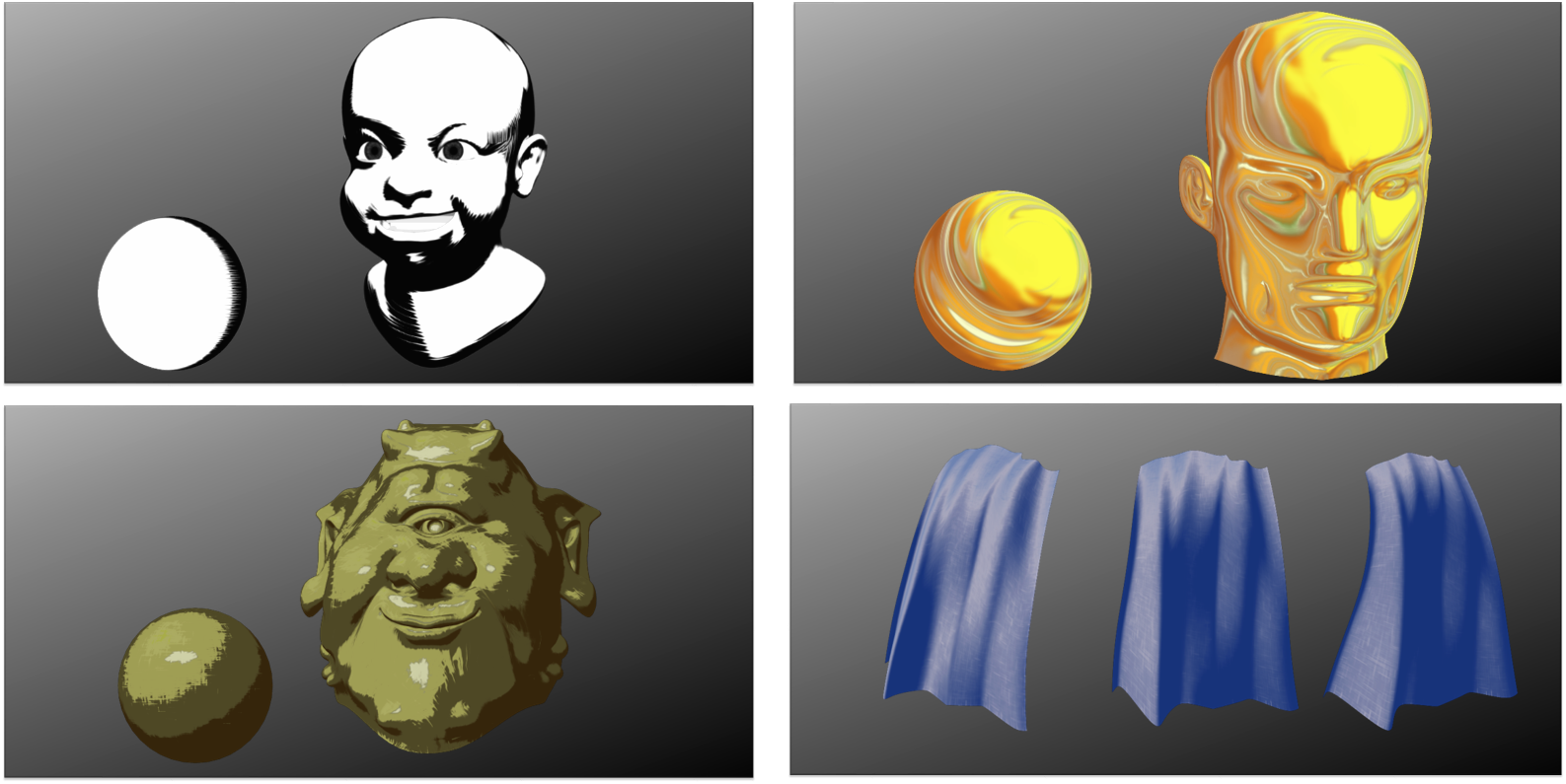| Japanese / English |
Lit-Sphere extension for artistic rendering
Hideki Todo, Ken Anjyo, Shun'ichi Yokoyama
The Visual Computer, Volume 29, Issue 6 (2013), pp. 473-480


Figure 1: Stylized shading styles obtained using our method.
Abstract
The Lit-Sphere model proposed by Sloan et al. (Proceedings of Graphics Interface 2001, pp. 143–150, 2001) is a method for emulating expressive artistic shading styles for 3D scenes. Assuming that artistic shading styles are described by view space normals, this model produces a variety of stylized shading scenes beyond traditional 3D lighting control. However, it is limited to the static lighting case: the shading effect is only dependent on the camera view. In addition, it cannot support small-scale brush stroke styles. In this paper, we propose a scheme to extend the Lit-Sphere model based on light space normals rather than view space normals. Owing to the light space representation, our shading model addresses the issues of the original Lit-Sphere approach, and allows artists to use a light source to obtain dynamic diffuse and specular shading. Then the shading appearance can be refined using stylization effects including highlight shape control, sub-lighting effects, and brush stroke styles. Our algorithms are easy to implement on GPU, so that our system allows interactive shading design.